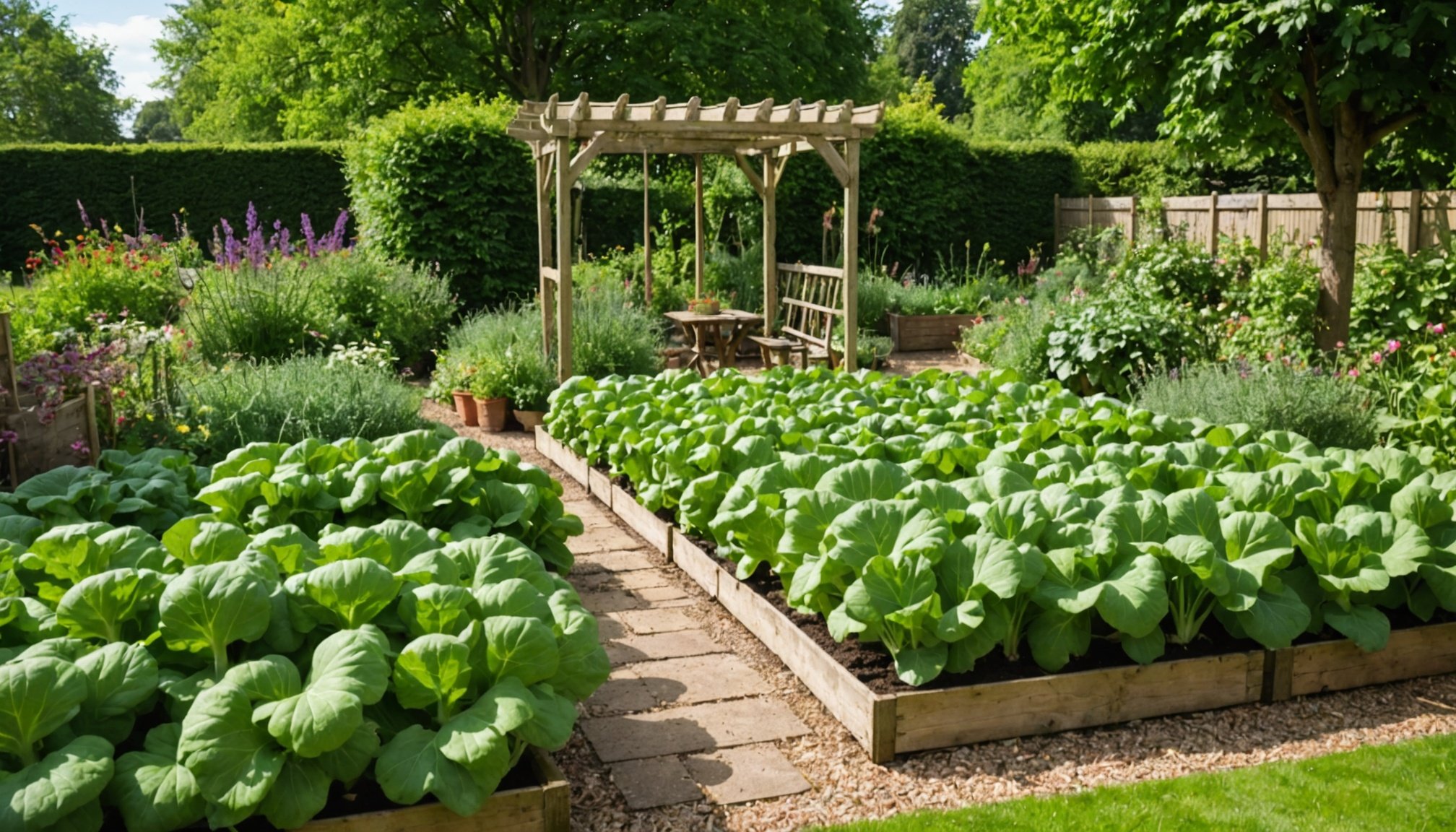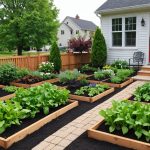Many of you, avid gardeners or gardening novices, may have found yourselves vexed by that shady corner in your garden. That space where the sun seems to forget to shine and where most plants refuse to grow. It’s a common assumption that all vegetables need full sun to produce a bountiful harvest. You might think that if a spot doesn’t get six or more hours of direct sunlight a day, you can’t grow vegetables there. This belief is not entirely correct. While it’s true that many plants crave sunlight, a surprising number of vegetables can not only survive but thrive in partial shade. This article will delve into shade-loving vegetables that you could incorporate into your garden. We will debunk the false notion that shade is a death sentence for your vegetable garden, and we’ll teach you how to make the most of the sunlight your garden does receive.
Understanding the Different Levels of Shade
Before we explore the shade-loving vegetables, let’s delve into the various degrees of shade. Identifying the shade level in your garden will help you choose the appropriate plants for that area.
A lire aussi : Exploring the Advantages of Adding a Green Roof to Your UK Home
Light shade refers to a location that is exposed to open sky but obstructed from direct sunlight by an obstacle such as a wall for two or three hours a day. Partial shade indicates that an area gets some sun, but it is blocked by an object like a high wall or building for at least half the day. Full shade, on the other hand, describes a spot that receives no direct sunlight but does receive some indirect light. Such areas are usually located under large trees or on the north side of buildings.
Knowing how much shade your garden gets is crucial to selecting the right plants. Remember that even shade-loving plants need some sunlight to photosynthesize and grow.
A découvrir également : Essential fridge cleaning tips for effective home improvement
Top Shade-Loving Vegetable Plants
Believe it or not, many vegetables prefer a bit of shade to the scorching full sun. Especially in the UK, where spring can still be quite chilly, these vegetables might give you a better harvest than their sun-loving counterparts.
Leafy Greens
Leafy greens, such as lettuce, spinach, and kale, are great shade vegetables. They can tolerate as little as three to four hours of sunlight a day. These plants grow well in cooler temperatures and grow primarily in the spring and autumn. The shade can actually be beneficial as it can prevent these vegetables from bolting, or prematurely producing seeds, which can make the leaves taste bitter.
Root Vegetables
Root vegetables such as beets, carrots, and potatoes can tolerate partial shade. These plants need at least four to five hours of sunlight a day. While they may grow slower in the shade, they’ll still produce a tasty crop. However, remember that these plants are grown for their roots, so they’ll need well-drained soil to avoid rotting.
Brassicas
Members of the Brassica family, including cabbage, broccoli, and cauliflower, can grow in partial shade. These plants can do well with around four hours of daylight. They prefer cooler temperatures, making them ideal for spring and autumn planting.
Successfully Growing Shade-Loving Vegetables
Successfully growing shade-loving vegetables involves more than just planting the seeds in the soil and hoping for the best. You need to consider a few factors to ensure that your plants will thrive.
Soil Quality
Regardless of how much sunlight they receive, all plants need good soil to grow. Ensuring that your soil is rich in organic matter and well-drained will make a significant difference in your harvest.
Watering
In shady areas, soil tends to retain moisture longer than in areas that receive full sun. Overwatering can lead to problems with root rot. Be mindful of your watering habits; it’s better to water less frequently but thoroughly than to water little and often.
Spacing
Plants growing in the shade need to maximize the light they receive. Spacing your plants correctly can ensure that they’re not competing for the available light.
Embrace the Shade
With this knowledge, you can transform that shady corner of your garden into a thriving vegetable patch. Remember to assess your shade levels, select suitable shade-loving vegetables, and provide good soil and appropriate care. Embrace the shade and make the most of every corner of your garden.
Shade-Loving Herbs and Vegetables
In addition to the vegetable plants mentioned above, you might want to consider adding some shade-loving herbs and other vegetables to your garden. Many herbs, such as parsley, chives, and mint, can tolerate partial shade. These herbs require about three to four hours of sunlight a day. They add flavour to your dishes and bring a pleasant aroma to your garden.
Another group of vegetables that can cope well with partial shade is the Allium family, which includes onions and garlic. These plants need around three to five hours of sunlight a day. For a successful shade harvest, plant them in early spring so they can make the most of the available light before summer shade sets in.
Brussels sprouts are yet another cool season crop that can grow in partial to full shade. These plants can even tolerate as little as three hours of sunlight a day. They do well in the cooler temperatures of early spring and late autumn. Brussels sprouts are a good source of protein and vitamins, making them a worthy addition to your shade garden.
Timing and Sowing
Knowing when to sow seeds is a crucial factor in achieving a successful shade harvest. The ideal time to direct sow or plant most shade-loving vegetables is during the cool season. Early spring, when the days begin to lengthen, and early autumn, when the days start to shorten, are the best periods.
Leafy greens, like lettuce, spinach, and kale, should be sown in early spring for a summer harvest and again in late summer for an autumn harvest. Root vegetables, such as beets and carrots, can also be sown in early spring and then again in late summer for two harvests in a year.
For the Brassica family and Brussels sprouts, the best time to plant is early spring so that they can mature before the heat of summer sets in. Onions and garlic should be planted in the autumn, overwintered, and then harvested the following summer.
Conclusion
It’s a myth that all vegetables require full sun to grow well. A significant number of vegetables grow perfectly in partial or even full shade. Shade tolerant vegetables can provide a bountiful harvest when their sunlight requirements, soil conditions, and watering needs are met. By understanding the different levels of shade, selecting suitable shade-loving vegetables, and providing appropriate care, you can turn that shady corner of your garden into a productive vegetable patch.
So why not embrace the shade? Sow seeds of shade-loving vegetables and herbs, observe their progress, and reap the rewards. Whether it’s the crisp taste of home-grown lettuce, the nutritious leaves of kale, the aromatic allure of fresh herbs, or the delicious yield of root vegetables, your shade garden can be just as rewarding as a sunny plot. Remember, every part of your garden, sunny or shady, has potential. It’s all about knowing what to plant where, and shade-loving vegetables can be the perfect solution to those less sunny spots.











